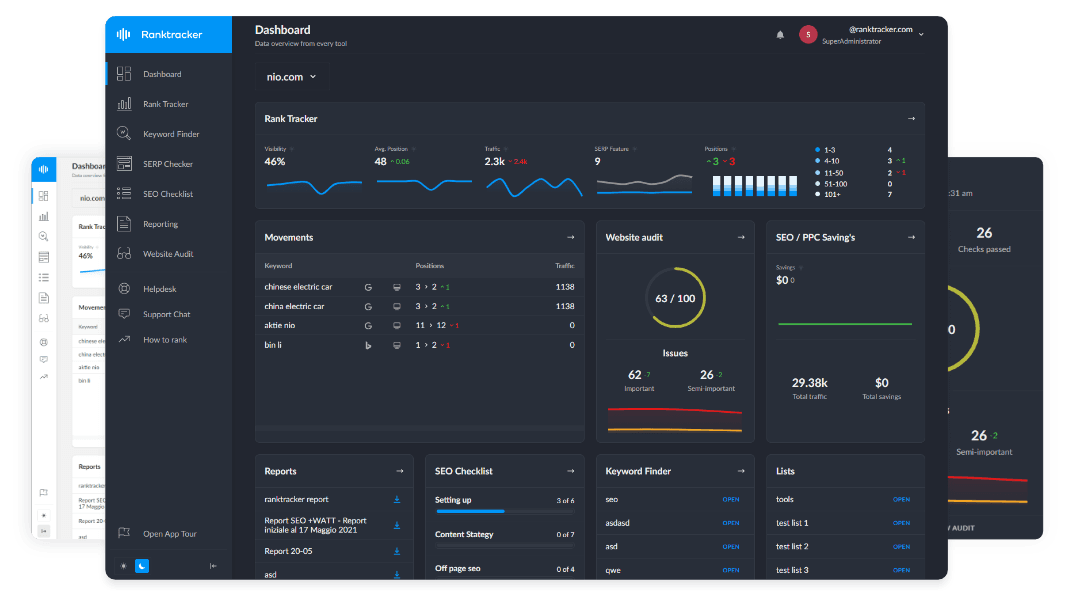Intro
A website’s success in search rankings is not just about keywords and backlinks—it’s also about structure and design. Search engines prioritize user experience, which means an intelligently structured website with a seamless design can significantly impact SEO performance. From navigation and page speed to mobile-friendliness and accessibility, web design plays a fundamental role in how well a site ranks on search engines like Google.
The Role of Website Structure in SEO
A well-structured website makes it easier for both users and search engine crawlers to navigate and understand the content. When a site is logically arranged with clear hierarchies, search engines can efficiently index the pages, increasing their chances of ranking higher.
A crucial aspect of structure is internal linking. By interconnecting pages through relevant links, websites distribute authority and help users find information effortlessly. Clear URL structures also contribute to better rankings—descriptive, keyword-rich URLs improve both user experience and search visibility.
Breadcrumb navigation enhances structure by showing users their location within a site. This not only improves usability but also allows search engines to interpret the site’s hierarchy. Sites that lack a clear structure risk lower rankings due to confusion in crawling and indexing processes.
The Importance of Mobile-Friendly Design
With mobile browsing surpassing desktop use, search engines now prioritize mobile-first indexing. Websites that are not mobile-friendly suffer in rankings, as search engines rank them lower due to poor usability on smaller screens. Mobile-friendly design means responsive layouts, fast-loading pages, and touch-friendly navigation.
Responsive design ensures that a website adapts to different screen sizes, providing an optimal viewing experience on all devices. Poor mobile experiences lead to higher bounce rates, which negatively impact SEO. Google interprets a high bounce rate as a sign that users are not finding value in a page, pushing it down the search results.
Additionally, mobile-first design promotes better user engagement by eliminating unnecessary elements and focusing on streamlined, functional experiences. Features such as adaptive fonts, intuitive touch navigation, and image optimization ensure that users remain on the page longer, reducing bounce rates and improving search engine rankings.
Site Speed and Performance Optimization
A slow-loading website can drive users away within seconds. Page speed is a direct ranking factor for search engines, as it affects user satisfaction. Websites with fast load times retain visitors longer, leading to lower bounce rates and higher engagement.
Optimizing images, minifying CSS and JavaScript, and using browser caching are key techniques to improve speed. Additionally, leveraging Content Delivery Networks (CDNs) distributes site content across multiple servers, reducing load times for users in different geographical locations.
The All-in-One Platform for Effective SEO
Behind every successful business is a strong SEO campaign. But with countless optimization tools and techniques out there to choose from, it can be hard to know where to start. Well, fear no more, cause I've got just the thing to help. Presenting the Ranktracker all-in-one platform for effective SEO
We have finally opened registration to Ranktracker absolutely free!
Create a free accountOr Sign in using your credentials
Google’s Core Web Vitals further emphasize the importance of page speed. Metrics such as Largest Contentful Paint (LCP), First Input Delay (FID), and Cumulative Layout Shift (CLS) influence how search engines evaluate user experience. Sites that perform well on these metrics are more likely to rank higher in search results.
Navigation and User Experience
A confusing or cluttered website design negatively affects both users and search engines. Simple, intuitive navigation enhances user experience, encouraging visitors to explore more pages. A logical menu structure with clear categories makes it easier for users to find what they need without frustration.
For SEO, easy navigation allows search engines to crawl and index content efficiently. Websites with a well-structured menu and an intuitive flow rank higher because they improve dwell time—how long users stay on a site. The longer visitors remain engaged, the more valuable a website appears to search engines.
Moreover, intuitive navigation prevents users from getting lost in a sea of content. Clear calls to action (CTAs), well-defined categories, and strategically placed internal links help guide visitors smoothly through the website, reducing frustration and increasing engagement.
The Role of Visual Elements in SEO
While search engines prioritize text-based content, visual elements such as images and videos play a significant role in engagement and SEO. Optimized images with descriptive alt text improve accessibility and provide additional opportunities for keyword relevance. Videos keep users engaged longer, signaling search engines that the content is valuable.
However, poorly optimized visuals can slow down page speed, negatively impacting rankings. Using next-generation image formats like WebP, compressing media files, and implementing lazy loading techniques help maintain performance without sacrificing visual appeal.
A strong example of effective web design that incorporates both SEO-friendly structures and visually appealing elements can be seen at Web design. Their approach balances aesthetics with functionality, ensuring that both users and search engines benefit.
Security and SEO
Website security is another factor that affects SEO performance. Google prioritizes secure websites, ranking HTTPS-enabled sites higher than those using HTTP. A secure site protects user data and builds trust, which contributes to lower bounce rates and increased conversions.
Additionally, secure websites prevent malicious attacks and reduce the risk of downtime. A site that is frequently hacked or flagged as unsafe may be penalized by search engines, causing significant drops in rankings.
The All-in-One Platform for Effective SEO
Behind every successful business is a strong SEO campaign. But with countless optimization tools and techniques out there to choose from, it can be hard to know where to start. Well, fear no more, cause I've got just the thing to help. Presenting the Ranktracker all-in-one platform for effective SEO
We have finally opened registration to Ranktracker absolutely free!
Create a free accountOr Sign in using your credentials
SSL certificates, two-factor authentication, and regular security audits ensure that websites remain safe and trustworthy. Visitors are more likely to interact with a site that they perceive as secure, increasing dwell time and engagement.
Content Presentation and Readability
SEO is not just about having the right keywords—it’s about how content is presented. Walls of text with no spacing or structure deter readers, leading to higher bounce rates. Proper formatting with headings, bullet points, and short paragraphs improves readability and keeps users engaged.
Search engines also analyze content layout to determine relevance. Structuring content with clear H1, H2, and H3 tags helps search engines understand the page’s main topics, improving ranking potential. Well-organized content ensures that both users and crawlers can easily digest the information.
Furthermore, the integration of structured data markup (Schema.org) enhances search engine understanding of content, improving the chances of appearing in rich snippets. These enhanced results can significantly boost click-through rates (CTR) and overall organic visibility.
The Future of Web Design and SEO
As search engine algorithms continue to evolve, website design will play an even greater role in SEO. AI-driven personalization, voice search optimization, and immersive user experiences will shape how sites are structured and ranked in the future.
The All-in-One Platform for Effective SEO
Behind every successful business is a strong SEO campaign. But with countless optimization tools and techniques out there to choose from, it can be hard to know where to start. Well, fear no more, cause I've got just the thing to help. Presenting the Ranktracker all-in-one platform for effective SEO
We have finally opened registration to Ranktracker absolutely free!
Create a free accountOr Sign in using your credentials
Websites that invest in user-first design, mobile performance, and intuitive navigation will have a competitive edge in rankings. By aligning structure and design with SEO best practices, businesses can achieve sustainable online visibility and improved search performance.
Voice search, in particular, is influencing how content is structured. Conversational queries and natural language processing (NLP) mean that websites need to optimize for question-based searches and long-tail keywords. Sites that offer concise, direct answers will gain better visibility in search engine results pages (SERPs).
As AI and machine learning continue to impact search algorithms, predictive search experiences and automated content recommendations will further enhance engagement. The ability to personalize user experiences based on behavior and preferences will give websites an advantage in retaining visitors and improving conversion rates.
Ultimately, the synergy between web design and SEO will continue to grow. By focusing on seamless user experiences, fast-loading pages, and structured content, websites can maintain their rankings and adapt to the ever-changing digital landscape.

